 ‘Star Trek Beyond’ does not go beyond or even reach expectations
‘Star Trek Beyond’ does not go beyond or even reach expectations
Directed by: Justin Lin
Starring: Chris Pine, Zachary Quinto, Karl Urban, Simon Pegg, Zoe Saldana, John Cho, Anton Yelchin, Idris Elba, and Sofia Boutella
“Star Trek Beyond” – The Star Trek phenomenon is a beloved science fiction entity with five television series and 13 feature-length films under its collective celestial belt. Personally, I am a pretty serious Star Trek fan. Now, I have never dressed up in a Federation uniform for a Comic-Con convention, but – admittedly – I have donned a Jean-Luc Picard costume for at least two Halloweens. Those, however, are stories for another time. I enjoy Star Trek for many reasons, and the crews’ comraderies and the engaging narratives that successfully balance logic, science and humanity are the two central motives for my fondness of the series and films.
“Star Trek Beyond” – like the last two movies – completely captures the charisma, tension and comedic interplay between its crew members. Catching up with Kirk (Chris Pine), Spock (Zachary Quinto), Uhura (Zoe Saldana), Bones (Karl Urban), Scotty (Simon Pegg), Sulu (John Cho), and Chekov (Anton Yelchin) on the big screen is a wonderful, warm reunion between fans and characters which should happen more frequently than once every three or four years.
Unfortunately, director Justin Lin crashes a surprisingly lackluster and – at times – nonsensical story coupled with haphazard visuals and some bad judgement. In spite of the wonderful crew chemistry and a couple spectacular sequences, this film disappoints by not offering an engaging narrative on few levels, but let’s level set.
The year is 2263, and the USS Enterprise is traveling in deep space on the third year of a five-year mission. The crew is adjusting to their lengthy journey but also looking forward to some rest and relaxation on the Yorktown, a highly-sophisticated space station nearby to Parts Unknown to us, the audience. The Yorktown is an impressive self-run facility which has the urban density of a Xandarian city in “Guardians of the Galaxy” (2014) with the vulnerable glassiness of Elysium in “Elysium” (2013).
The Enterprise is docked for seemingly five minutes, when they are called back out into space to rescue the crew of a crashed ship on a desolate planet. Life becomes massively problematic for Kirk and the Enterprise, when everyone needs to abandon the ship and escape to the same desolate planet. The antagonist opposite the Enterprise – and who caused their current strife - is a warlike, malevolent alien named Krall (Idris Elba), and he desperately searches for an ancient artifact that Kirk has in his possession.
Our Trek heroes are separated on this seemingly inhabitable mass of dormant, volcanic rock and must use their Starfleet training with limited communications to find one another, get off the planet and hopefully stop Krall and his unspecified plans.
Five writers (including Pegg) penned lots of entertaining dialogue between the leads, including a smart decision of pairing up Spock and Bones, as they trudge across the strange terrain and bicker and bond to the delight of both fans and nonfans. Meanwhile, Scotty meets a technically-savvy warrior named Jaylah (Sofia Boutella). She is a solid addition to the cast and humorously and repeatedly refers to Scotty as “Montgomery Scotty”.
One of the problems, however, is that no one can really infer who Krall is or his motivation outside of wanting this ancient artifact. The script does not give us much opportunity to learn about him or his backstory throughout much of the picture. Now, he absolutely does a destructive number on the Enterprise with his can opener-like, swarming tiny ships known as “bees”. We also know that he is menacing, but he is unfamiliar in the Trek universe, and the script hardly devotes any time to reveal what makes him tick.
When the movie does reveal some mysteries from “behind the curtain”, it unfortunately feels preposterous, as the writers suffered from a case of trying to be too smart for their own good. His motivations are not terribly believable either, and when a science-fiction movie’s villain is flawed, the overall product will suffer in some way.
Speaking of ways, many times I lost my way during the dizzying action sequences. The designs of the Yorktown and the catacombs of the fractured Enterprise are impressively intricate, but they are also overwhelming. As Lin’s cameras spin, dart and track through countless half-destroyed Enterprise hallways and the Yorktown’s wildly sophisticated urban structures, railways and passageways, I found myself losing perspective of where I was. Lin does not explain how the Enterprise crew and Krall’s team are supposed to physically move from points A to B to C to D. Instead, Lin just presents constant movement through a never-ending abundance of technology and alchemy, and so these colossal, time-consuming scenes lose their sense of tension and danger. To put it simply, they were over-engineered.
The one exception is Krall’s initial attack on the Enterprise. It transfers extraordinary amounts of helplessness from the screen to the audience, as his swarm looks like vicious nanotechnology attacking on a grand scale. Regrettably, there are plot holes which puzzle on grand scales as well. For instance, Jaylah found a crashed ship in which she now calls home and keeps it invisible to Krall, but he lived on the planet long before she arrived, so how would he not know that it exists?
Also, the Enterprise crew may have found a way to battle Krall’s bees, but their methods do not make any logical sense, and they rival Jeff Goldblum’s (character’s) inane computer virus idea in “Independence Day” (1996). There are certainly more moments like the previously-mentioned two, and overall, the film seems too contrived, as the plot plods along from scene to scene on the planet’s surface and during some limited time in space. “Star Trek Beyond” feels like amateur hour, and that is ironic when considering the film’s extravagant heaps of special effects.
There are a few special human moments, such as the tributes to the late Leonard Nimoy and Anton Yelchin. Also, during the movie’s first 10 minutes, Kirk mentions that he wonders about his life’s purpose and offers thoughts about his deceased father. For some reason, Lin and company never revisit this seemingly important setup for Kirk, but my guess is…it will be part of the next film.
Good or bad, I’ll certainly spend two hours to see it, just like this movie.
That’s what Star Trek fans do. (1.5/4 stars)

 Allen’s ‘Café Society’ is not a golden film, but it is a valuable one
Allen’s ‘Café Society’ is not a golden film, but it is a valuable one
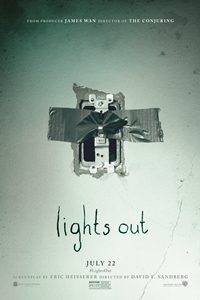 Lights Out
Lights Out
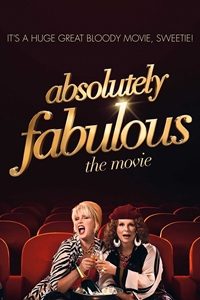 Lulu and Lumely Remain Fabulous
By Kaely Monahan
Lulu and Lumely Remain Fabulous
By Kaely Monahan Ghostbusters
Ghostbusters
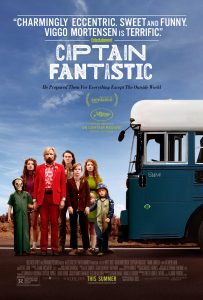 Captain Fantastic is unexpectedly charming and delightfully entertaining
By Kaely Monahan
Captain Fantastic is unexpectedly charming and delightfully entertaining
By Kaely Monahan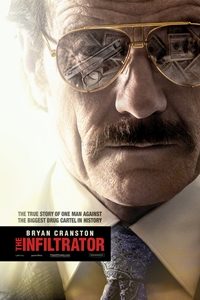 Cranston shines as the good cop in The Infiltrator
By Kaely Monahan
Cranston shines as the good cop in The Infiltrator
By Kaely Monahan Hunt for the Wilderpeople
Hunt for the Wilderpeople
 ‘Wiener-Dog’ sometimes barks up the right tree
‘Wiener-Dog’ sometimes barks up the right tree
 The Secret Life of Pets
The Secret Life of Pets
 The Purge: Election Year
The Purge: Election Year
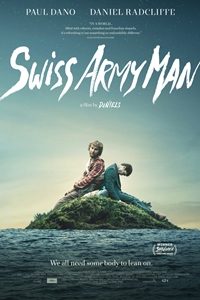 ‘Swiss Army Man’ uses many gadgets but does not connect
‘Swiss Army Man’ uses many gadgets but does not connect
 Tarzan swings…and misses
Tarzan swings…and misses
 Big, Friendly, but not so giant a hit
The BFG is entertaining but not memorable
Big, Friendly, but not so giant a hit
The BFG is entertaining but not memorable The Neon Demon
The Neon Demon
 ‘The Shallows’ works until the script drowns in the last act
‘The Shallows’ works until the script drowns in the last act
 ‘The Music of Strangers’ hits some high notes
‘The Music of Strangers’ hits some high notes
 Finding Dory
Finding Dory
 Memorable performances make ‘Genius’ a smart choice
Memorable performances make ‘Genius’ a smart choice








